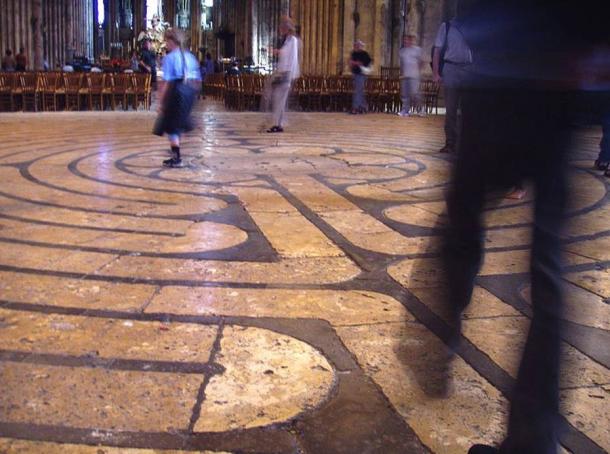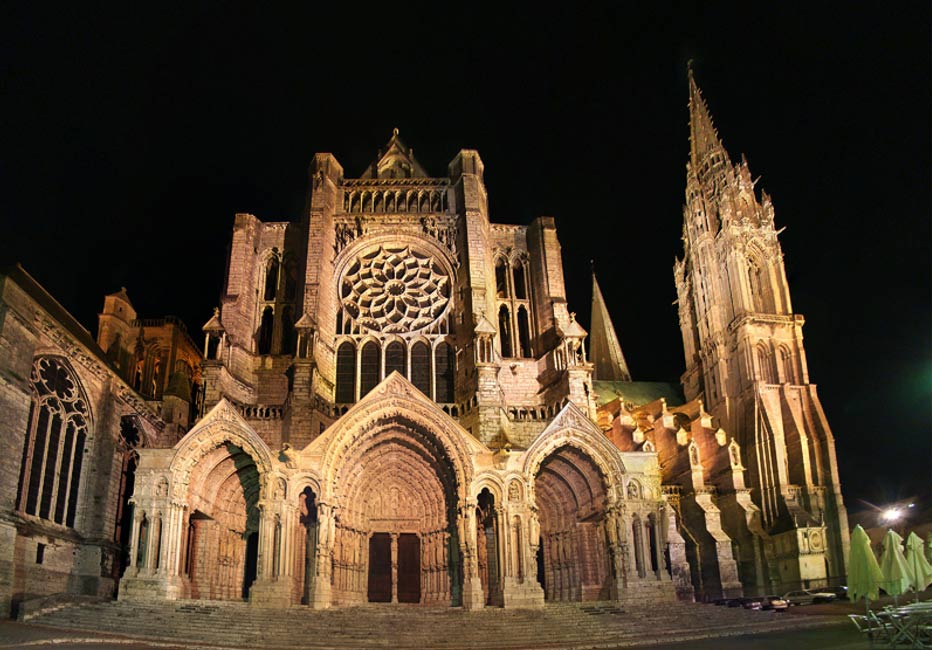The Chartres Cathedral – A Sacred Site for Ancient Druids and Christians
The monumental Chartres Cathedral hides within its walls stories which connect the world of ancient Druids, the cult of the Divine Feminine and Christianity. It is located on a leyline linking Glastonbury, Stonehenge, and the Pyramids of Egypt. For centuries it has been one of the symbols of French Christianity.
However, before the times of Christianity the site where the cathedral is located, was a very important place in the pagan belief system. Its legendary roots come from the time when Druids, the Celtic priests of Britain and Gaul, held sacred rites there. The territory of Chartres was highly influenced by the Carnutes, a Gaulish people who had a vast Druid assembly. They were mentioned by Gaius Julius Caesar and Livy, who recorded the legendary traditions of the Carnutes.
Christianity and Ancient Traditions
In the legends, the Druids believed that this was a place where spiritual energy emanates from underground. It is called nowadays a Chakra, the place of power associated with the color green and the 4th Chakra energies (heart center of love and devotion). In that time, Gauls created statues of the protective mother goddess with infants. Early Christians perhaps discovered this statue and it may have inspired them to create a medieval legend that the Druids had foretold the story of a virgin who would give birth to a child for the good of the world.
During the Gallo-Roman times, the underground waters of the site were believed to have been revered by the Druids. Legend also says that Roman soldiers attacked Christians while they were celebrating their faith at the virgin shrine. It seems that Christians identified the mother goddess of the Druids with the virgin Mary. This too may have become the basis for future ideas to building a magnificent cathedral at the site. The building began on a hill at Chartres around the 4th century AD.
The first centuries of Christianity were like a fight between the old traditions of Chartres and the new ones. However, during the rule of Emperor Constantine, Christianity seemed to be already well established. There were at least five cathedrals, always connected with the cult of the Virgin Mary, who became also a patron saint of Chartres. The biggest treasure of the church became a piece of cloth, which is believed to be the garment (known as the Sancta Camisa) which Mary wore when she gave birth to Jesus.

"Adoration of the Shepherds" by Gerard van Honthorst, 1622. (Public Domain)
In 876, the cathedral was already known as an important destination for pilgrimages. The pilgrims believed that Mary's cloth brought many miracles to them. When the Normans attacked the city in the 10th century, the bishop of Chartres waved the cloth on top of the church, causing the invaders to flee and leading the people of Chartres to believe that they were under the Blessed Virgin’s protection.
Nonetheless, the cathedral was damaged by fires in 1134 and 1194, however in both instances, people renovated the church immediately after and the Sancta Camisa survived without any damage. The people of Chartres decided that this was a sign from heaven that the place where their church was located is special and they should construct a much more impressive building there. Thus, they created the cathedral, which still stands at Chartres.
- List of Medieval Killers found Inscribed on Cathedral Wall may help solve Murder Mystery
- Archaeologists discover oldest Carolingian cathedral in Germany
- Double Medieval child burial, one Pagan, one Christian, mystifies German researchers
The Church of the Black Madonna
According to legend, the Black Madonna was a lady of the Templars. The statue of the Black Madonna with a child was commissioned in 1508. It is perhaps a black wooden copy of the silver Madonna that was located on the main altar before. The statue sits on the top of the pillar and is often called the ''Lady of the Pillar''. Before the French Revolution, the Chartres Cathedral had a second Black Madonna in the crypt. Unfortunately, it was probably burned during the revolution, although some resources are convinced that the church didn't suffer in this period. Today, tourists and pilgrims can see a copy in the church that was made in 1857.

Black Madonna of Chartres. (DADIRRIDREAMING)
Nowadays, the Chartres cathedral is known also as Cathédrale Notre-Dame de Chartres and is located about 50 miles (80.47 km) from Paris. It is considered as one of the greatest achievements of architecture in history. The work on the main nave started in 1220 and the cathedral was finished and officially dedicated to King Louis IX and his family on October 24, 1260.
The church was built on the plan of a Latin cross with three aisles, an ambulatory, and a short transept. It is rounded on the eastern side and has five radiating chapels. The symmetry of the church appears as an example of the mastery of Gothic architecture. The north has a 113 m (377-foot) early 16th-century Flamboyant Gothic spire on top of the tower, while the south Spire is a 105 m (349-foot) plain Romanesque pyramid dating from the earliest history of the church.

Cathedral of Chartres. (CC BY 2.0)
The Mysterious Labyrinth
In this impressive heart of Christianity, a floor made of ancient recycled stones was created in 1205. It was used for the contemplative walks by the monks, and it is still used by pilgrims today. The path through the labyrinth is 964 feet (293.83 meters) long. In the past the labyrinth had a metal plate with figures of Ariadne, Theseus, the Minotaur and other characters related to the mythical labyrinth of Minos.

Plan of the labyrinth of Chartres Cathedral. (CC BY-SA 3.0)
The Cathedral is full of symbolism related to ancient mythology. The monumental stained glass windows are dated to the early 13th century and were fixed in the 16th century. The decoration, apart from the religious scenes of passion and resurrection, holy symbols, evangelists, angels, etc., contains also King Solomon, King Nebuchadnezzar, and an unidentified Pharaoh. Some other symbols are related to both – Christian and older traditions.
- 1,200-year-old bones found in Aachen Cathedral in Germany believed to belong to Charlemagne, King of the Franks
- Ancient skull was drilled and harvested for medicine in the 18th century
- The Mysteries of the Three Kings: Who Were They and Where Did They Come From?
The Chartres Cathedral is a symbol of sacred traditions from ancient times. For more than 2,500 years, it has remained one of the religious centers of Europe. It still hides many secrets and legends from the worlds of the Celts and early Christians.

Chartres Cathedral labyrinth. (CC BY-SA 3.0)
The cathedral joined the list of UNESCO's list of World Heritage Sites in 1979. Every year, thousands of people visit the church. Most of them are looking for closeness with a deity, it is commonly believed that all of them are looking for the Christian God. However, the site is an important place for modern pagans too.
Featured image: Chartres Cathedral, Eure-et-Loir, Centre, France. The north façade. Source: Public Domain
References:
Titus Burckhardt, Chartres and the birth of the cathedral, 1996.
Margot E.Fassler, The Virgin of Chartres: Making History Through Liturgy and the Arts, 2010.
Jean Markale, Cathedral of the Black Madonna: The Druids and the Mysteries of Chartres, 2004.
http://www.gnostictemplars.org/MarkPinkham-TheForbiddenSecretsOfTheBlackMadonna.pdf
http://www.sacred-destinations.com/france/chartres-cathedral



















Comments
"It is located on a leyline linking Glastonbury, Stonehenge, and the Pyramids of Egypt." a simple search will show you that Chartres is NOT located anywhere near the same longitude. "Leylines" are not exact science but this is a bit ridiculous...
The major gallo roman sanctuary of the Carnutes was probably one kilometer south of the center of the town. You can find interresting archeological reports on this website:
http://archeologie.chartres.fr/fr/en-direct-des-chantiers/les-principaux...